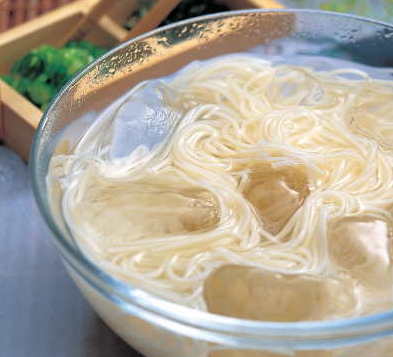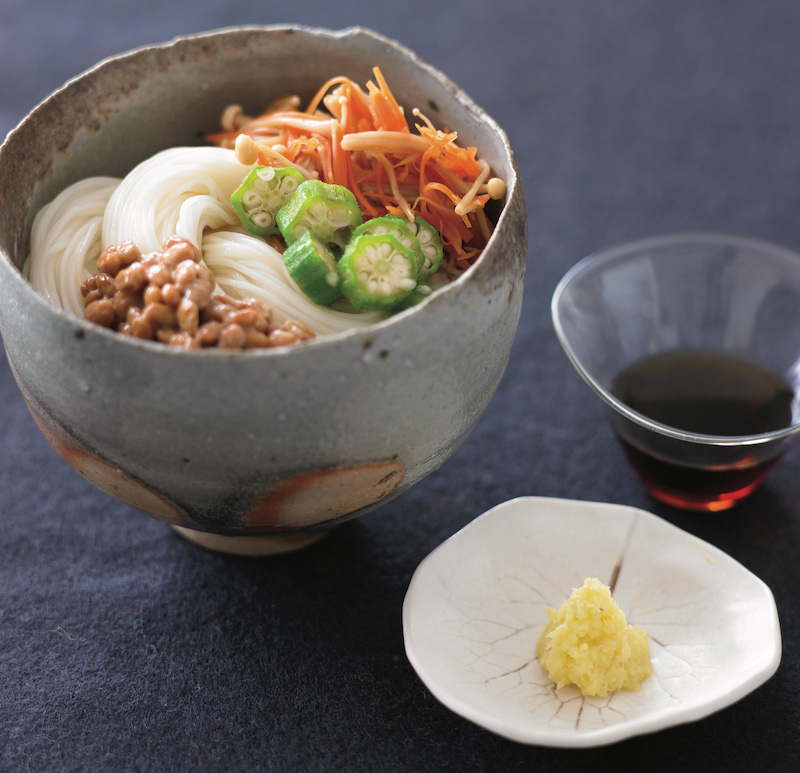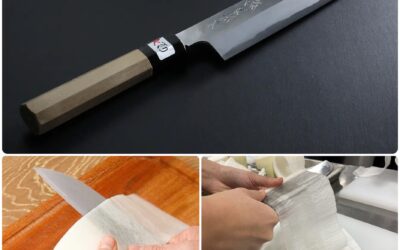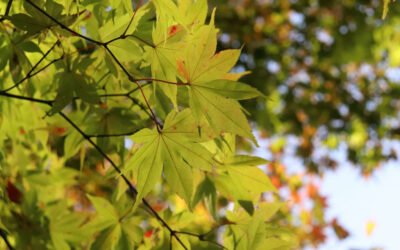
Survival strategy for hot, humid days: Chilled Sōmen Noodles-on-the-rocks!
DOWNLOAD information on buying, storing and cooking sōmen
and serving the noodles.

© Photo by Leigh Beisch
Styling by Karen Shinto
ネバネバそうめん
Slithery Sōmen Noodles
Mouth feel (the way a food feels in the mouth) often defines a food culture. The Japanese have an affinity for sticky, viscous items that string, like nattō (sticky fermented soybeans) and okra. The Japanese also love slithery, slippery foods that can be slurped.
The Slithery Sōmen Noodles that appear on page 59 of KANSHA (Ten Speed Press, 2010) combines both. Collectively the Japanese refer to these textures as neba neba; those who remain unappreciative are more likely to call it: Never! Never!




